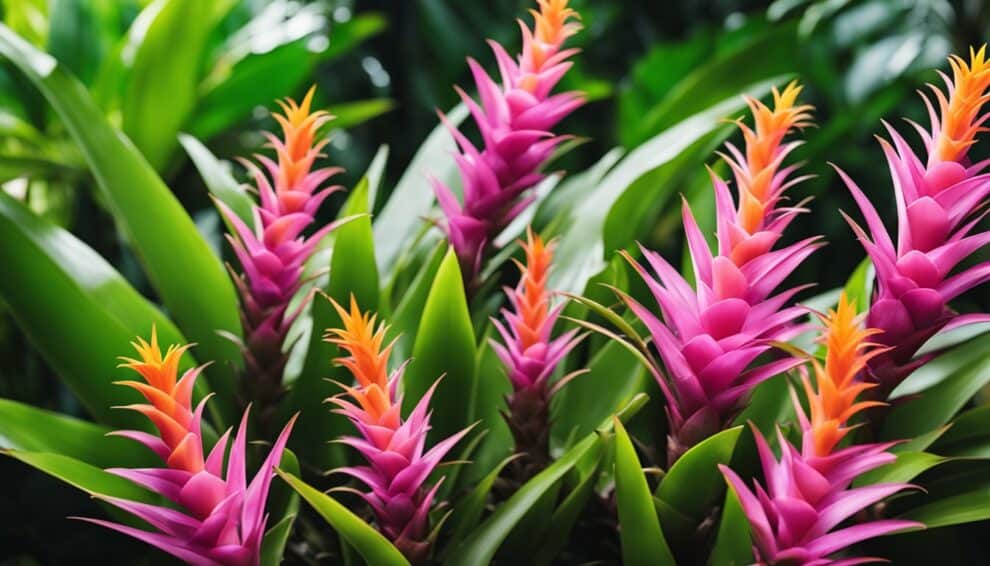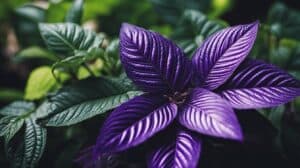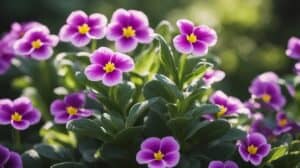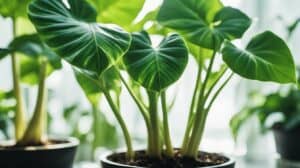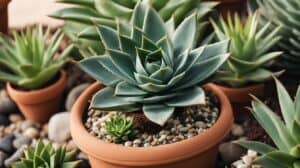Bromeliads are a diverse group of plants that are native to tropical regions of the Americas.
They are popular among gardeners for their striking foliage and colorful blooms.
Aechmea and Guzmania are two common genera of bromeliads that are prized for their beauty and ease of care.
In this article, we will explore the process of propagating Aechmea and Guzmania, so that you can create your own tropical paradise.

Propagating bromeliads can be a rewarding experience for both novice and experienced gardeners.
It allows you to grow new plants from existing ones, which can be a cost-effective way to expand your collection.
Aechmea and Guzmania are particularly well-suited for propagation, as they produce offsets or “pups” that can be easily separated from the parent plant.
With the right care and attention, these pups can grow into healthy, mature plants that will add beauty and interest to your garden.
In this article, we will provide step-by-step instructions for propagating Aechmea and Guzmania, as well as tips for caring for your new plants.
Whether you are looking to create a tropical oasis in your backyard or simply want to add some color to your indoor space, propagating bromeliads is a great way to achieve your gardening goals.
So, let’s get started and learn how to create Bromeliad Babies for your own tropical paradise!
Understanding Bromeliads
Bromeliads are a diverse family of plants that are native to tropical and subtropical regions of the Americas.
They are known for their distinctive rosettes of leaves and showy, colorful flowers.
Bromeliads are popular ornamental plants, and they can be grown both indoors and outdoors.
Species Spotlight: Aechmea
Aechmea is a genus of bromeliads that includes more than 200 species.
These plants are known for their striking inflorescences, which can be red, pink, yellow, or orange.
Aechmea plants are epiphytic, which means that they grow on other plants rather than in soil.
They are often found growing on trees in their native habitats.
Aechmea plants are relatively easy to care for, and they can be propagated by removing offsets, or “pups,” that grow from the base of the parent plant.
These pups can be planted in their own pots and will eventually grow into mature plants.
Species Spotlight: Guzmania
Guzmania is another genus of bromeliads that includes more than 150 species.
These plants are known for their colorful bracts, which are often mistaken for flowers.
Guzmania plants are also epiphytic, and they are commonly found growing on trees in the rainforest.
Guzmania plants are relatively easy to care for, and they can be propagated by removing offsets that grow from the base of the parent plant.
These offsets can be planted in their own pots and will eventually grow into mature plants.
In conclusion, bromeliads are a fascinating group of plants that can add a tropical touch to any garden or indoor space.
By understanding the unique characteristics of different bromeliad species, gardeners can successfully propagate and care for these beautiful plants.
Propagation Basics

Tools and Materials
Before propagating Aechmea and Guzmania plants, it is important to gather the necessary tools and materials.
The following tools and materials are essential for successful propagation:
- Clean, sharp pruning shears
- A rooting hormone powder or gel
- A well-draining potting mix
- A small pot with drainage holes
- A spray bottle filled with water
- Plastic wrap or a clear plastic bag
Timing and Conditions
Timing and conditions are crucial for successful propagation.
The best time to propagate Aechmea and Guzmania plants is during their active growing season, which is typically in the spring or summer.
The ideal temperature for propagation is between 70-80°F (21-27°C), with high humidity levels of at least 50 percent.
It is important to keep the soil moist but not waterlogged, and to avoid exposing the plants to direct sunlight.
Propagation Methods
There are two main methods for propagating Aechmea and Guzmania plants: division and offsets.
- Division involves separating the parent plant into smaller sections, each with its own roots and foliage.
This method is best for mature plants that have outgrown their pot or are becoming too large to handle.
- Offsets are small plantlets that grow from the base of the parent plant.
These can be gently removed and potted individually once they have developed their own roots and foliage.
This method is best for younger plants that are still developing.
Regardless of the propagation method chosen, it is important to handle the plants gently and avoid damaging the roots or foliage.
Using a rooting hormone can also increase the success rate of propagation.
With proper timing, conditions, and techniques, propagating Aechmea and Guzmania plants can be a rewarding and enjoyable experience for any plant enthusiast.
Caring for Bromeliad Pups

Bromeliad babies, also known as pups, are small offshoots that grow at the base of the parent plant.
These pups can be separated from the parent plant and propagated to create a tropical paradise in your home.
Here are some tips on how to care for bromeliad pups.
Separating Pups from Parent Plants
When the pups are about one-third the size of the parent plant, they can be separated.
Gently remove the pup from the parent plant by cutting the connecting stem with a sharp, sterile knife.
Be sure to leave some of the base attached to the pup.
Potting and Soil Requirements
Bromeliads are epiphytes, which means they grow on other plants and trees in their natural habitat.
When potting bromeliad pups, use a well-draining soil mix that is specifically formulated for epiphytes.
A good mix should contain bark, perlite, and sphagnum moss.
Watering and Feeding
Bromeliads do not require a lot of water, but they do need to be kept moist.
Water the plant by pouring water into the center cup of the plant, and make sure to empty any excess water.
Fertilize the plant once a month with a balanced fertilizer.
Light and Temperature Needs
Bromeliads thrive in bright, indirect light. Keep the plant away from direct sunlight, which can burn the leaves.
Bromeliads also prefer warm temperatures between 60-80°F (15-27°C). Keep the plant away from cold drafts and air conditioning vents.
By following these tips, you can successfully care for your bromeliad pups and create a tropical paradise in your home.
Troubleshooting Common Issues

Pest Management
Bromeliads are susceptible to a range of pests, including spider mites, mealybugs, and scale insects.
These pests can cause damage to the leaves and flowers of the plant, affecting their overall health and appearance.
To prevent infestations, it is important to keep the plant clean and free of debris.
Regularly check the plant for signs of pests and remove any affected leaves or flowers.
If an infestation does occur, there are several methods for pest management.
One option is to use a natural insecticide, such as neem oil, which can be sprayed directly onto the plant.
Another option is to introduce natural predators, such as ladybugs or lacewings, to the environment.
These predators will feed on the pests and help control the infestation.
Disease Prevention
Bromeliads are also susceptible to a range of diseases, including fungal infections and bacterial rot.
To prevent these diseases, it is important to keep the plant in a well-ventilated area with good air circulation.
Avoid overwatering the plant, as this can lead to waterlogged soil and promote the growth of harmful bacteria.
If a disease does occur, it is important to act quickly to prevent it from spreading.
Remove any affected leaves or flowers and isolate the plant from other plants to prevent the spread of the disease.
Treat the plant with a fungicide or bactericide, following the instructions on the label carefully.
By following these tips for pest management and disease prevention, you can ensure that your bromeliad babies remain healthy and vibrant, creating a tropical paradise in your home or garden.
Frequently Asked Questions

How can I encourage bromeliad pups to develop roots?
To encourage the development of roots in bromeliad pups, it is essential to provide them with a suitable environment.
This includes high humidity and bright, indirect light. The pups should also be planted in a well-draining soil mix and kept consistently moist.
It may take a few weeks for the roots to develop, but with patience and proper care, the pups should thrive.
Is it possible to root bromeliad pups in water?
While it is possible to root bromeliad pups in water, it is generally not recommended.
Bromeliads are epiphytes, meaning they grow on other plants and obtain their nutrients from the air and rainwater.
When placed in water, the pups may be susceptible to rot and may not develop strong roots.
It is best to plant the pups in a well-draining soil mix and keep them consistently moist.
What’s the timeline for bromeliad pups to start flowering?
The timeline for bromeliad pups to start flowering varies depending on the species and growing conditions.
Some species may take several years to flower, while others may flower within a year.
Generally, bromeliads will produce pups after flowering, and these pups will eventually mature and produce their flowers.
With proper care, the timeline for flowering can be accelerated.
When is the right time to detach pups from the mother bromeliad?
The right time to detach pups from the mother bromeliad is when they have developed their own root system and are at least one-third the size of the parent plant.
It is important to wait until the pups are mature enough to survive on their own, but not too long that they become too entangled with the parent plant.
Carefully remove the pup from the parent plant, being careful not to damage the roots.
Can bromeliad leaves be used for propagation?
Bromeliad leaves cannot be used for propagation. Unlike other plants, bromeliads do not produce new plants from leaves.
Instead, they produce pups or offsets from the base of the plant. These pups can be carefully removed and planted in their own pot.
What steps should I follow to successfully separate Guzmania pups?
To successfully separate Guzmania pups, wait until they have developed their own roots and are at least one-third the size of the parent plant.
Carefully remove the pup from the parent plant, being careful not to damage the roots. Plant the pup in a well-draining soil mix and keep it consistently moist.
Provide the pup with bright, indirect light and high humidity. With proper care, the pup should thrive and eventually produce its flowers.






